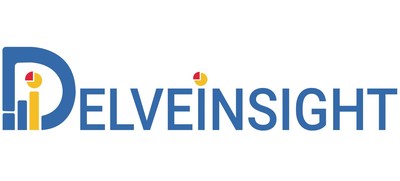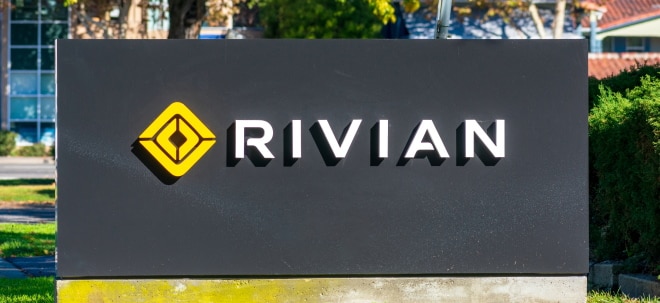SERM Market Shows Promising Growth Trajectory During the Study Period (2020-2034) Owing to the Rising Demand in Oncology and Women's Health | DelveInsight
The SERMs market is projected to experience substantial growth in the near future, driven by a rising incidence of cancer diagnoses, growing awareness about SERMs, and a surge in the number of SERMs undergoing clinical trials or awaiting regulatory approval by various companies.
LAS VEGAS, July 17, 2025 /PRNewswire/ -- DelveInsight's SERM Market Size, Target Population, Competitive Landscape & Market Forecast report includes a comprehensive understanding of current treatment practices, addressable patient population, which includes top indications such as breast cancer, postmenopausal osteoporosis, dyspareunia and vaginal dryness, and others. The selected indications are based on approved therapies and ongoing pipeline activity. The report also provides insights into the emerging SERM, market share of individual therapies, and current and forecasted market size from 2020 to 2034, segmented into 7MM.

Key Takeaways from the SERM Market Report
- As per DelveInsight's analysis, the total market size of SERM in the 7MM is expected to surge significantly by 2034.
- The report provides the total potential number of patients in the indications, such as breast cancer, postmenopausal osteoporosis, dyspareunia and vaginal dryness, and others.
- Leading SERM companies, such as Atossa Therapeutics, Sermonix Pharmaceuticals, and others, are developing novel SERMs that can be available in the SERM market in the coming years.
- Some of the key SERMs in the pipeline include (Z)-Endoxifen, Lasofoxifene, and others.
- In April 2025, Atossa Therapeutics announced that the US Patent and Trademark Office (USPTO) had granted a new patent (US Patent No. 12,275,684) directed to enteric oral formulations comprising (Z)-Endoxifen as well as methods of treating subjects with those oral formulations.
- In April 2025, Sermonix Pharmaceuticals and Quantum Leap Healthcare Collaborative broadly announced that in the Phase II clinical trial evaluating lasofoxifene as a neoadjuvant endocrine therapy in molecularly selected HR+/HER2-, locally advanced breast cancer, the investigational drug was well tolerated and demonstrated promising early activity in suppressing the Ki67 protein in both premenopausal and postmenopausal patients.
- In January 2025, Sermonix Pharmaceuticals announced the publication of an article entitled 'Effects of Lasofoxifene Versus Fulvestrant on Vaginal and Vulvar Symptoms in Patients with ESR1-Mutated, ER+/HER2-, Metastatic Breast Cancer from the ELAINE-1 Study', in the peer-reviewed journal Clinical Breast Cancer.
Discover which indication is expected to grab the major SERM market share @ SERM Market Report
SERM Market Dynamics
The SERM market is witnessing dynamic growth, driven by an increasing prevalence of hormone-related disorders such as breast cancer, osteoporosis, and infertility. SERMs function by selectively stimulating or inhibiting estrogen receptors in different tissues, offering therapeutic benefits without the widespread side effects of hormone replacement therapy. With rising global awareness of women's health issues and increasing access to healthcare in emerging markets, the demand for SERMs is projected to grow steadily. Additionally, advancements in personalized medicine are supporting the use of SERMs in targeted therapies, particularly in oncology and postmenopausal care.
A key driver of the SERM market is the high incidence of hormone receptor-positive breast cancer. As oncology treatment paradigms shift toward more targeted, less toxic therapies, SERMs continue to play a critical role in both adjuvant and preventive settings. Moreover, their utility in conditions such as osteoporosis supports their broader adoption in geriatric medicine.
However, market growth is tempered by several factors, including the emergence of alternative therapies such as aromatase inhibitors and biologics, which offer improved efficacy in certain indications. Concerns around side effects, such as thromboembolic events and endometrial cancer risk with long-term SERM use, have also led to cautious prescribing practices. Additionally, generic competition has eroded profit margins for several first-generation SERMs, prompting pharmaceutical companies to invest in next-generation compounds with better safety and efficacy profiles.
Innovation remains a key aspect of the market dynamics, with ongoing research exploring newer SERMs that can provide tissue-specific actions with reduced adverse effects. These next-generation SERMs aim to expand therapeutic applications beyond traditional indications, including cardiovascular health and cognitive disorders in postmenopausal women. Strategic collaborations, licensing deals, and regulatory approvals are shaping the competitive landscape, with companies focusing on differentiated product offerings and combination therapies.
In summary, the SERM market is marked by a strong clinical foundation, expanding therapeutic applications, and evolving competition. As aging populations and hormone-related conditions continue to rise globally, the demand for SERMs is expected to remain robust. Nevertheless, future growth will depend on continued innovation, improved safety profiles, and integration into broader personalized treatment strategies.
SERM Treatment Market
SERMs are utilized in the treatment of various estrogen-related conditions. These include managing ovulatory dysfunction in infertility, preventing and treating postmenopausal osteoporosis, treating and lowering the risk of breast cancer, and addressing dyspareunia caused by menopause. SERMs are also combined with conjugated estrogens to manage estrogen deficiency and vasomotor symptoms linked to menopause. Their usage is tailored based on their tissue-specific activity.
Tamoxifen is a primary hormonal therapy for estrogen receptor (ER)-positive metastatic breast cancer and is also prescribed for reducing breast cancer risk in high-risk women. It serves as an adjuvant therapy in ductal carcinoma in situ with or without axillary node involvement. Additionally, tamoxifen helps improve bone density and lipid profiles in postmenopausal women.
Toremifene, a derivative of tamoxifen with chlorine substitution, was developed to reduce liver-related side effects such as DNA adduct formation and potential hepatic tumors. It is used as endocrine therapy in ER/PR-positive stage IV or recurrent metastatic breast cancer and has shown comparable efficacy to tamoxifen in both adjuvant and metastatic settings.
OSPHENA (ospemifene), an estrogen receptor agonist/antagonist, is approved for the treatment of moderate to severe dyspareunia and vaginal dryness resulting from vulvovaginal atrophy due to menopause. Initially approved by the US FDA in 2013 and marketed by Shionogi, it later gained EU approval in 2015. In 2017, Duchesnay obtained exclusive marketing rights for OSPHENA in the US and Canada.
DUAVEE (marketed as DUAVIVE in the EU) combines conjugated estrogens with a SERM and is indicated for treating moderate to severe vasomotor symptoms of menopause and for preventing postmenopausal osteoporosis. It was approved for use in the US in October 2013 and in the EU in December 2014.
Learn more about the SERM @ SERM Analysis
Key Emerging SERM and Companies
Several key players, including Atossa Therapeutics ((Z)-Endoxifen), Sermonix Pharmaceuticals (Lasofoxifene), and others are involved in developing drugs for SERMs for various indications such as breast cancer, dyspareunia and vaginal dryness, and others. Overall, this is an exciting new class of agents with great potential for development.
(Z)-Endoxifen, developed by Atossa Therapeutics, is a nonsteroidal selective estrogen receptor modulator (SERM) from the triphenylethylene class, currently in Phase II development for estrogen receptor-positive (ER+) breast cancer. This agent shows promise across multiple stages of breast cancer management: lowering breast tissue density to reduce cancer risk, decreasing cancer cell activity before surgery, and helping prevent recurrence or new tumors following initial treatment. Atossa is advancing (Z)-Endoxifen with a focus on treating metastatic breast cancer.
In April 2025, Atossa announced that the U.S. Patent and Trademark Office granted a new patent (US Patent No. 12,275,684) covering enteric oral formulations of (Z)-Endoxifen and their use in treatment methods. Earlier, in December 2024, the company presented three posters at the San Antonio Breast Cancer Symposium (SABCS), showcasing pharmacokinetic and tolerability findings from the ongoing Phase II EVANGELINE trial.
Lasofoxifene is a novel investigational endocrine therapy being studied for its effectiveness as an ESR1 antagonist, particularly in tumors with ESR1 mutations. It has demonstrated notable anti-tumor activity both as a standalone treatment and when used with a CDK4/6 inhibitor in Phase II trials. Lasofoxifene is distinguished by its selective activity in different tissues, with previously observed benefits for vaginal and bone health.
In April 2025, Sermonix Pharmaceuticals and Quantum Leap Healthcare Collaborative reported encouraging Phase II data from a neoadjuvant trial of lasofoxifene in patients with HR+/HER2- locally advanced breast cancer, showing good tolerability and early suppression of the proliferation marker Ki67 in both premenopausal and postmenopausal women. Earlier, in January 2025, Sermonix published findings in Clinical Breast Cancer from the ELAINE-1 study, comparing lasofoxifene and fulvestrant, highlighting lasofoxifene's positive effects on vaginal and vulvar symptoms in ESR1-mutated, ER+/HER2- metastatic breast cancer patients.
The anticipated launch of these emerging therapies are poised to transform the SERM market landscape in the coming years. As these cutting-edge therapies continue to mature and gain regulatory approval, they are expected to reshape the SERM market landscape, offering new standards of care and unlocking opportunities for medical innovation and economic growth.
To know more about SERM clinical trials, visit @ SERM Treatment
SERM Overview
Selective estrogen receptor modulators (SERMs), also referred to as estrogen receptor agonists/antagonists (ERAAs), are a group of compounds that interact with estrogen receptors (ERs). Unlike full agonists or pure antagonists, SERMs exhibit tissue-specific actions, meaning they can either stimulate or block estrogenic effects depending on the target tissue. This selective behavior is due to their ability to bind to the two estrogen receptor subtypes, ERα and ERβ, in ways that influence their activity uniquely across different tissues. The resulting effects are determined by how SERMs modify signaling pathways in a tissue-dependent manner, rather than by directly altering DNA. In the context of bone health, SERMs help regulate bone metabolism by decreasing osteoclast activity via a mechanism involving transforming growth factor-β3, leading to reduced bone resorption and thereby supporting the prevention and treatment of osteoporosis.
SERM Epidemiology Segmentation
The SERM market report proffers epidemiological analysis for the study period 2020–2034 in the 7MM, segmented into:
- Total Cases of Selected Indication for SERM
- Total Eligible Patients of the Selected Indications
- Total Treated Cases in Selected Indications for SERMs
SERM Report Metrics | Details |
Study Period | 2020–2034 |
SERM Report Coverage | 7MM [The United States, the EU-4 (Germany, France, Italy, and Spain), the United Kingdom, and Japan] |
Key Indications Covered in the Report | Breast cancer, Postmenopausal osteoporosis, Dyspareunia and vaginal dryness, and others |
Key SERM Companies | Atossa Therapeutics, Sermonix Pharmaceuticals, Duchesnay, Pfizer, Eli Lilly, and others |
Key SERM | (Z)-Endoxifen, Lasofoxifene, OSPHENA, DUAVEE, EVISTA (raloxifene hydrochloride), FABLYN, and others |
Scope of the SERM Market Report
- SERM Therapeutic Assessment: SERM current marketed and emerging therapies
- SERM Market Dynamics: Conjoint Analysis of Emerging SERM Drugs
- Competitive Intelligence Analysis: SWOT analysis and Market entry strategies
- Unmet Needs, KOL's views, Analyst's views, SERM Market Access and Reimbursement
Discover more about SERMs in development @ SERM Clinical Trials
Table of Contents
1 | Key Insights |
2 | Report Introduction |
3 | Executive Summary of SERM |
4 | Key Events |
5 | Market Forecast Methodology |
6 | SERM Market Overview at a Glance in the 7MM |
6.1 | Market Share (%) Distribution by Indication in 2024 |
6.2 | Market Share (%) Distribution by Indication in 2034 |
7 | SERM: Background and Overview |
8 | Treatment and Management |
9 | Target Patient Pool |
9.1 | Key Findings |
9.2 | Assumptions and Rationale: 7MM |
9.3 | Epidemiology Scenario in the 7MM |
9.3.1 | Total Cases of Selected Indication for SERM in the 7MM |
9.3.2 | Total Eligible Patient Pool for SERM in Selected Indication in the 7MM |
9.3.3 | Total Treatable Cases in Selected Indication for SERM in the 7MM |
10 | Marketed Therapies |
10.1 | Key Competitors |
10.2 | OSPHENA (ospemifene): Duchesnay |
10.2.1 | Product Description |
10.2.2 | Regulatory milestones |
10.2.3 | Other developmental activities |
10.2.4 | Clinical development |
10.2.5 | Safety and efficacy |
10.3 | DUAVEE (conjugated estrogens/bazedoxifene): Pfizer |
10.3.1 | Product Description |
10.3.2 | Regulatory milestones |
10.3.3 | Other developmental activities |
10.3.4 | Clinical development |
10.3.5 | Safety and efficacy |
List to be continued in the report… | |
11 | Emerging Therapies |
11.1 | Key Competitors |
11.2 | (Z)-Endoxifen: Atossa Therapeutics |
11.2.1 | Product Description |
11.2.2 | Other developmental activities |
11.2.3 | Clinical development |
11.2.4 | Safety and efficacy |
11.3 | Lasofoxifene: Sermonix Pharmaceuticals |
11.3.1 | Product Description |
11.3.2 | Other developmental activities |
11.3.3 | Clinical development |
11.3.4 | Safety and efficacy |
List to be continued in the report… | |
12 | SERM: Seven Major Market Analysis |
12.1 | Key Findings |
12.2 | Market Outlook |
12.3 | Conjoint Analysis |
12.4 | Key Market Forecast Assumptions |
12.4.1 | Cost Assumptions and Rebates |
12.4.2 | Pricing Trends |
12.4.3 | Analogue Assessment |
12.4.4 | Launch Year and Therapy Uptakes |
12.5 | Total Market Size of SERM in the 7MM |
12.6 | The United States |
12.7 | EU4 and the UK |
12.8 | Japan |
13 | SWOT Analysis of SERM |
14 | KOL Views of SERM |
15 | Unmet Needs of SERM |
16 | Market Access and Reimbursement |
17 | Bibliography |
18 | Report Methodology |
Related Reports
Metastatic HR+/HER2− Breast Cancer Market
Metastatic HR+/HER2− Breast Cancer Market Insights, Epidemiology, and Market Forecast – 2034 report delivers an in-depth understanding of the disease, historical and forecasted epidemiology, as well as the market trends, market drivers, market barriers, and key metastatic HR+/HER2− breast cancer companies, including Merck, Arvinas, Olema Pharmaceuticals, Celcuity, Roche, AstraZeneca, Daiichi Sankyo, Eli Lilly, Sermonix Pharmaceuticals, Genentech, Veru Pharma, DualityBio, BioNtech, Evgen Pharma, Carrick Therapeutics, EQRx, G1 Therapeutics, Immutep, among others.
Metastatic HER2-positive Breast Cancer Market
Metastatic HER2-positive Breast Cancer Market Insights, Epidemiology, and Market Forecast – 2034 report delivers an in-depth understanding of the disease, historical and forecasted epidemiology, as well as the market trends, market drivers, market barriers, and key metastatic HER2-positive breast cancer companies, including Byondis, Tanvex Biopharma, Prestige BioPharma, EirGenix, AMbrx, CSPC ZhongQi Pharmaceutical Technology Co., Ltd., Roche, Jiangsu Alphamab Oncology Co., Ltd., Jiangsu HengRui Medicine Co., Ltd., RemeGen, Shanghai Henlius Biotech, Merus N.V., Hangzhou DAC Biotech, Lepu Biopharma, Zymeworks, Klus Pharma Inc., Bolt Biotherapeutics, GeneQuantum Healthcare, ALX Oncology, Precirix, BriaCell Therapeutics Corporation, Bliss Biopharmaceutical, BioInvent International, Incyte Corporation, Triumvira Immunologics, Inc., Horizon Therapeutics, among others.
Breast Cancer Market Insights, Epidemiology, and Market Forecast – 2034 report delivers an in-depth understanding of the disease, historical and forecasted epidemiology, as well as the market trends, market drivers, market barriers, and key breast cancer companies, including Veru, Sanofi, Roche, AstraZeneca, Eli Lilly, EQRx, Gilead, Sermonix Pharmaceuticals, Evgen Pharma, Tyme, Genentech, Daiichi Sankyo, among others.
Postmenopausal Osteoporosis Market
Postmenopausal Osteoporosis Market Insights, Epidemiology, and Market Forecast – 2034 report delivers an in-depth understanding of the disease, historical and forecasted epidemiology, as well as the market trends, market drivers, market barriers, and key postmenopausal osteoporosis companies, including Suzhou Suncadia Biopharmaceuticals, Shanghai Henlius Biotech, Inc., Mabpharm Limited, Alvotech, Samsung Bioepis Co., Ltd., Biocon Biologics, Entera Bio Ltd., Genor Biopharma Co., Ltd., Addpharma, among others.
About DelveInsight
DelveInsight is a leading Business Consultant and Market Research firm focused exclusively on life sciences. It supports pharma companies by providing comprehensive end-to-end solutions to improve their performance. Get hassle-free access to all the healthcare and pharma market research reports through our subscription-based platform PharmDelve.
Contact Us
Shruti Thakur
info@delveinsight.com
+14699457679
Logo: https://mma.prnewswire.com/media/1082265/3528414/DelveInsight_Logo.jpg
SOURCE DelveInsight Business Research, LLP

